The automotive world is brimming with compact SUVs designed to meet the evolving needs of drivers, and two models that stand out in this segment are the Kia Stonic and the Renault Captur. Both vehicles offer unique technical specifications and features aimed at enhancing the driving experience. In this article, we will delve into a comprehensive comparison of the two, examining their performance, innovations, and overall value.
Kia Stonic vs Renault Captur – Differences & prices compared
Both models have their strengths – but which one suits you more?
Compare performance, efficiency, price and space directly: Kia Stonic or Renault Captur?
Engine Performance and Efficiency
The Kia Stonic boasts a range of engine options, including a 1.0-liter petrol engine available in both standard and mild hybrid variants. The petrol engines deliver between 79 to 100 HP, with torque ratings from 113 to 172 Nm. Acceleration from 0-100 km/h varies significantly, with the fastest option hitting 11.3 seconds. Fuel efficiency ranges from 5.5 to 5.8 L/100 km, making it a decent option for daily commutes.
On the other hand, the Renault Captur offers a broader array of engines, including full hybrid, petrol MHEV, and LPG options. The power outputs for these engines range from 91 HP in the smaller variants to an impressive 158 HP in higher trims. The Captur excels in acceleration with the quickest model achieving 0-100 km/h in just 8.5 seconds, reflecting its more performance-oriented tuning. Fuel consumption averages between 4.7 and 7.8 L/100 km, providing diverse choices for drivers prioritizing efficiency.
Dimensions and Comfort
When it comes to dimensions, the Kia Stonic measures 4140 mm in length, 1760 mm in width, and stands 1505 mm tall. It offers a trunk capacity of 352 liters and can comfortably seat five passengers. The interior, while compact, has been designed to maximize space for both passengers and cargo.
The Renault Captur, however, is larger, stretching 4239 mm in length with a width of 1797 mm and a height of 1575 mm. The Captur also boasts a significantly larger trunk capacity of 422 liters, making it an attractive option for families or those needing extra storage space. Both vehicles comfortably accommodate five passengers but the Captur edges ahead in overall interior space.
Technological Innovations
In terms of technology, both vehicles are equipped with modern infotainment systems. The Kia Stonic features an 8-inch touchscreen with smartphone integration capabilities, including Apple CarPlay and Android Auto. Higher trims may also offer additional features such as wireless charging and advanced safety technologies.
The Renault Captur, however, has positioned itself as a leader in in-car technology by offering a larger 9.3-inch infotainment system in higher trims. It includes similar smartphone integration features, alongside a host of advanced driving aids like lane departure warning, adaptive cruise control, and blind-spot monitoring. The hybrid models also include a battery management system displaying real-time energy usage and regeneration data.
Driving Experience and Comfort
The driving dynamics of both vehicles present distinct characteristics. The Kia Stonic is designed for a sporty feel with its responsive handling and firm ride quality. Its compact nature translates into nimble maneuverability, making it ideal for urban environments.
Contrarily, the Renault Captur prioritizes a plush ride experience. With a focus on comfort, the Captur absorbs road imperfections more effectively, providing a smooth driving experience. Drivers looking for a more relaxed ride will find the Captur's setup preferable, especially on longer journeys.
Conclusion: Which One Should You Choose?
Ultimately, the choice between the Kia Stonic and the Renault Captur boils down to personal preferences and specific needs. If you're after a sportier, agile compact SUV with decent efficiency and modern tech, the Stonic is a formidable option. However, if you prioritize space, comfort, and cutting-edge technology, especially in hybrid variants, the Captur may be the better fit. Both vehicles embody the spirit of modern compact SUVs, each with its own set of advantages to cater to today's dynamic driving landscape.
Here’s where it gets real: The technical differences in detail
Costs and Efficiency:
When it comes to price and running costs, the biggest differences usually appear. This is often where you see which car fits your budget better in the long run.
Kia Stonic has a slight advantage in terms of price – it starts at 20100 £, while the Renault Captur costs 21100 £. That’s a price difference of around 994 £.
Fuel consumption also shows a difference: Renault Captur manages with 4.50 L and is therefore clearly perceptible more efficient than the Kia Stonic with 5.60 L. The difference is about 1.10 L per 100 km.
Engine and Performance:
Power, torque and acceleration are the classic benchmarks for car enthusiasts – and here, some clear differences start to show.
When it comes to engine power, the Renault Captur has a a bit edge – offering 143 HP compared to 115 HP. That’s roughly 28 HP more horsepower.
In acceleration from 0 to 100 km/h, the Renault Captur is noticeable quicker – completing the sprint in 8.90 s, while the Kia Stonic takes 10.70 s. That’s about 1.80 s faster.
In terms of top speed, the Kia Stonic performs minimal better – reaching 182 km/h, while the Renault Captur tops out at 180 km/h. The difference is around 2 km/h.
There’s also a difference in torque: Renault Captur pulls evident stronger with 265 Nm compared to 200 Nm. That’s about 65 Nm difference.
Space and Everyday Use:
Whether family car or daily driver – which one offers more room, flexibility and comfort?
Both vehicles offer seating for 5 people.
In curb weight, Kia Stonic is hardly perceptible lighter – 1205 kg compared to 1323 kg. The difference is around 118 kg.
In terms of boot space, the Renault Captur offers slightly more room – 422 L compared to 352 L. That’s a difference of about 70 L.
In maximum load capacity, the Renault Captur performs somewhat better – up to 1363 L, which is about 208 L more than the Kia Stonic.
When it comes to payload, Renault Captur barely noticeable takes the win – 453 kg compared to 445 kg. That’s a difference of about 8 kg.
Who comes out on top?
Overall, the Renault Captur shows itself to be leaves the rival little chance and secures the title of DriveDuel Champion.
It convinces with the more balanced overall package and proves to be the more versatile choice for everyday use.
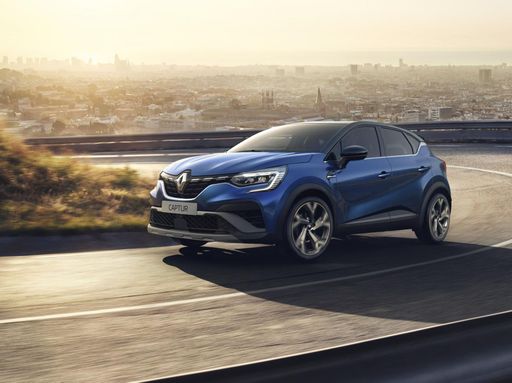 @ Renault Group Media
@ Renault Group Media
Renault Captur
Kia Stonic
The Kia Stonic is a sprightly compact crossover that mixes city-friendly agility with a cheeky, modern design — perfect for buyers who want style without sacrificing sense. Inside it serves up clever practicality and a bright, well-equipped cabin, making everyday driving feel a bit more fun than it has any right to be.
details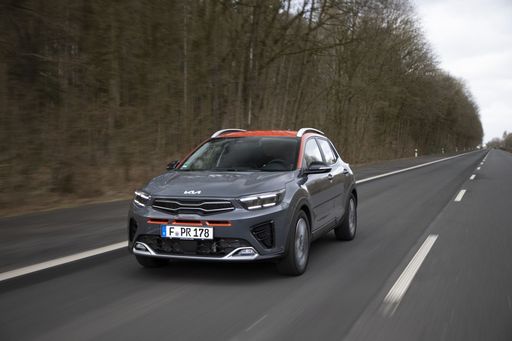 @ Kia Corporation
@ Kia Corporation
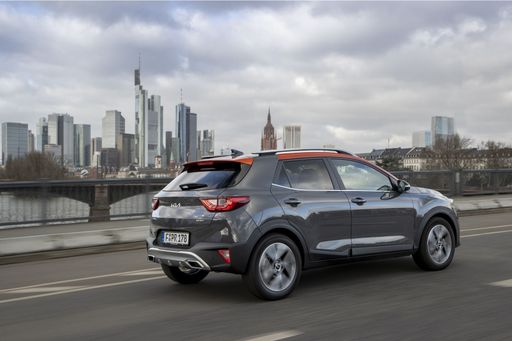 @ Kia Corporation
@ Kia Corporation
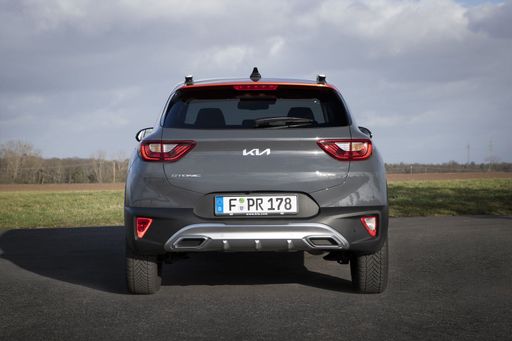 @ Kia Corporation
@ Kia Corporation
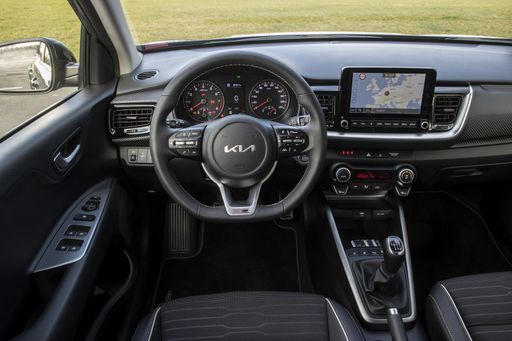 @ Kia Corporation
@ Kia Corporation
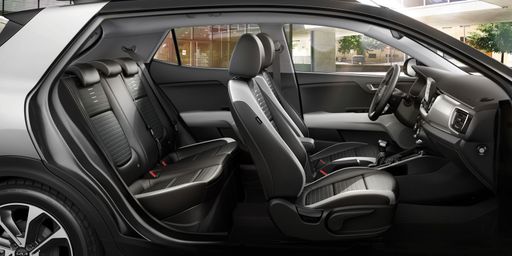 @ Kia Corporation
@ Kia Corporation
Renault Captur
The Renault Captur is a cheeky little crossover that pairs city-friendly agility with a roomy, well-thought-out cabin and enough style to turn heads at the lights. It’s a sensible choice for buyers who want practical versatility and a dash of personality on their daily drives, without taking itself too seriously.
details @ Renault Group Media
@ Renault Group Media
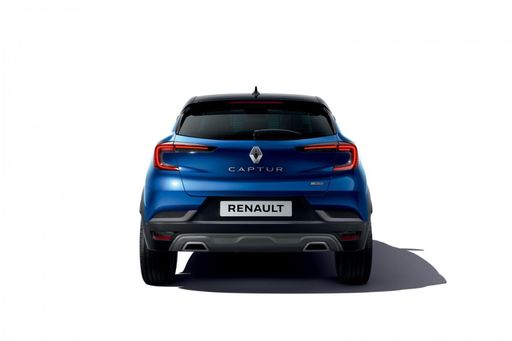 @ Renault Group Media
@ Renault Group Media
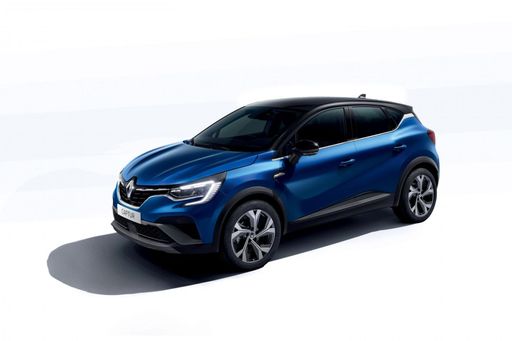 @ Renault Group Media
@ Renault Group Media
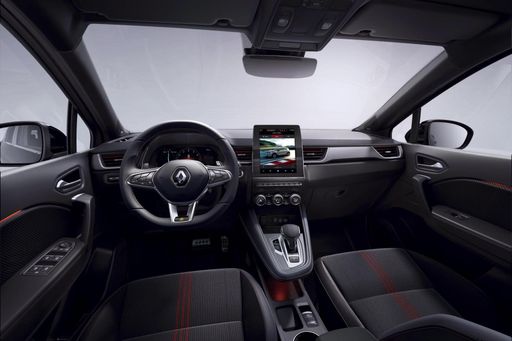 @ Renault Group Media
@ Renault Group Media
 @ Kia Corporation
@ Kia Corporation
|
 @ Renault Group Media
@ Renault Group Media
|
|
|
|
Costs and Consumption |
|
|---|---|
|
Price
20100 - 26600 £
|
Price
21100 - 28300 £
|
|
Consumption L/100km
5.6 - 5.9 L
|
Consumption L/100km
4.5 - 6 L
|
|
Consumption kWh/100km
-
|
Consumption kWh/100km
-
|
|
Electric Range
-
|
Electric Range
-
|
|
Battery Capacity
-
|
Battery Capacity
-
|
|
co2
127 - 133 g/km
|
co2
102 - 137 g/km
|
|
Fuel tank capacity
45 L
|
Fuel tank capacity
48 L
|
Dimensions and Body |
|
|---|---|
|
Body Type
SUV
|
Body Type
SUV
|
|
Seats
5
|
Seats
5
|
|
Doors
5
|
Doors
5
|
|
Curb weight
1205 - 1270 kg
|
Curb weight
1323 - 1514 kg
|
|
Trunk capacity
352 L
|
Trunk capacity
326 - 422 L
|
|
Length
4165 mm
|
Length
4239 mm
|
|
Width
1760 mm
|
Width
1797 mm
|
|
Height
1520 mm
|
Height
1575 mm
|
|
Max trunk capacity
1155 L
|
Max trunk capacity
1276 - 1363 L
|
|
Payload
440 - 445 kg
|
Payload
376 - 453 kg
|
Engine and Performance |
|
|---|---|
|
Engine Type
Petrol, Petrol MHEV
|
Engine Type
Full Hybrid, Petrol, Petrol MHEV
|
|
Transmission
Manuel, Automatic
|
Transmission
Automatic, Manuel
|
|
Transmission Detail
Manual Gearbox, Dual-Clutch Automatic
|
Transmission Detail
Automatic Gearbox, Manual Gearbox, Dual-Clutch Automatic
|
|
Drive Type
Front-Wheel Drive
|
Drive Type
Front-Wheel Drive
|
|
Power HP
100 - 115 HP
|
Power HP
115 - 143 HP
|
|
Acceleration 0-100km/h
10.7 - 12.1 s
|
Acceleration 0-100km/h
8.9 - 12.3 s
|
|
Max Speed
179 - 182 km/h
|
Max Speed
180 km/h
|
|
Torque
172 - 200 Nm
|
Torque
160 - 265 Nm
|
|
Number of Cylinders
3
|
Number of Cylinders
3 - 4
|
|
Power kW
74 - 85 kW
|
Power kW
84 - 116 kW
|
|
Engine capacity
998 cm3
|
Engine capacity
1199 - 1789 cm3
|
General |
|
|---|---|
|
Model Year
2025
|
Model Year
2025
|
|
CO2 Efficiency Class
D
|
CO2 Efficiency Class
C, D, E
|
|
Brand
Kia
|
Brand
Renault
|
Is the Kia Stonic offered with different drivetrains?
The Kia Stonic is offered with Front-Wheel Drive.
The prices and data displayed are estimates based on German list prices and may vary by country. This information is not legally binding.
